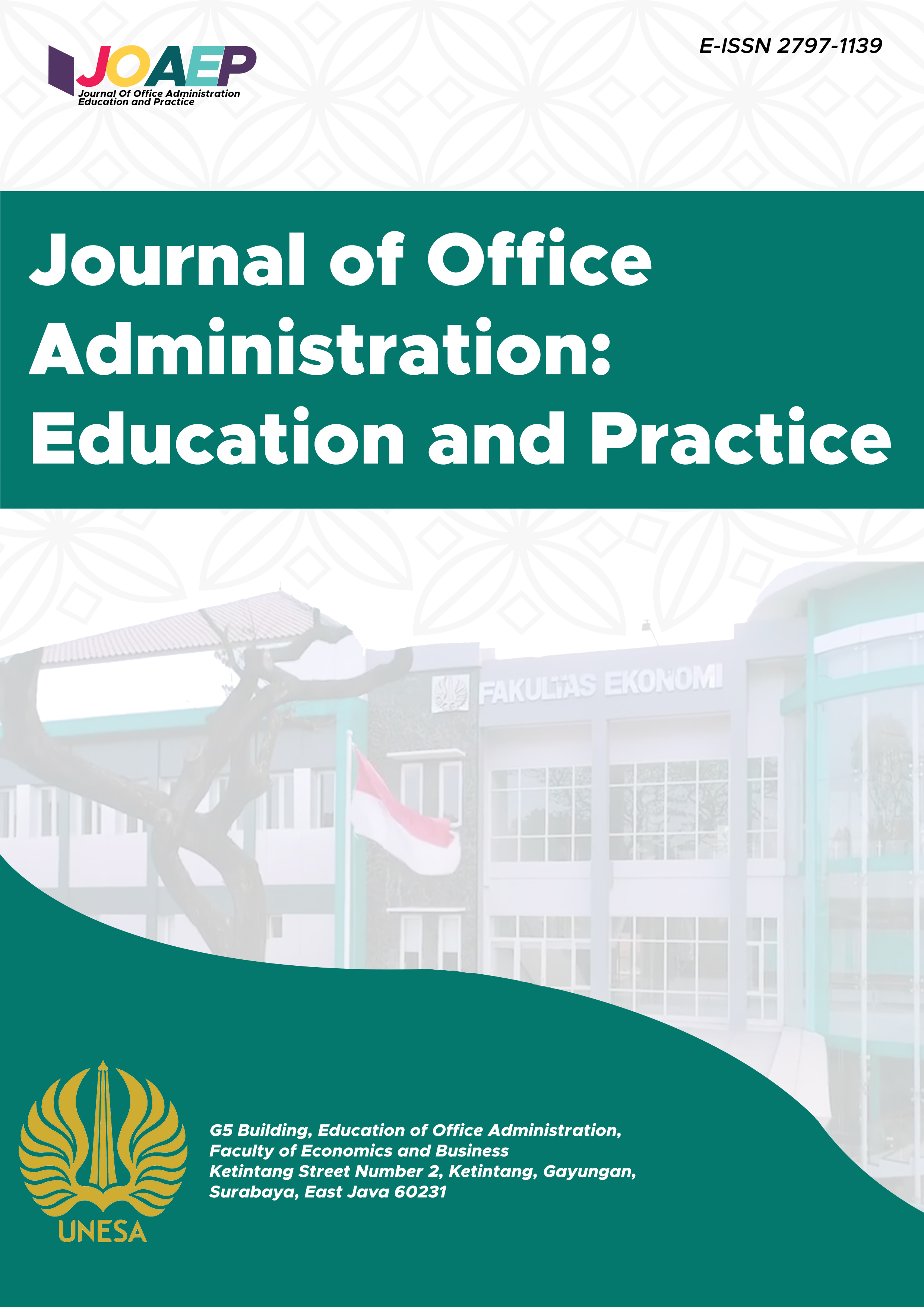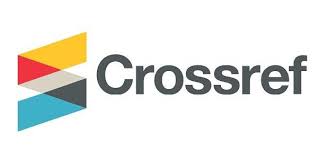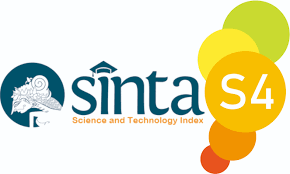Influence of Habit on Learning Value of ManageBac Usage in Singapore School Kelapa Gading
DOI:
https://doi.org/10.26740/joaep.v3n1.p12-24Keywords:
ManageBac, LMS, UTAUT2, Habit, Learning ValueAbstract
This study aims to analyze the influence of habit on the learning value of ManageBac usage in a Singapore School Kelapa Gading located in North Jakarta, Indonesia. ManageBac is one of the Learning Management System used by international schools using IB curriculum. The study will apply the UTAUT2 model, which is a theoretical framework used to understand the factors that influence the adoption and use of technology in various contexts. The study will extend the UTAUT2 framework by integrating the habit construct and provide fresh insight into predictors of students' intentions toward ManageBac usage. The study will collect data through a survey questionnaire consisting of 11 questions using Likert scale. The data will be analyzed using Variance-Based Structural Equation Modeling (VB-SEM) using GSCA Pro application. The population of the study will be a total of 112 high school students at Singapore School Kelapa Gading using the saturation sampling technique which includes the population as the sample. The result shows that HT has a significant influence on LV, and the more habitual a user is in using ManageBac, the higher their perceived value of the system. This research will provide insights to teachers that it is important to form a habit for students to use ManageBac and recommendations for future research to use LV instead of PV variable to better understand the context of m-learning.
Downloads
References
Ain, N. U., Kaur, K., & Waheed, M. (2016). The influence of learning value on learning management system use: An extension of UTAUT2. Information Development, 32(5). https://doi.org/10.1177/0266666915597546
Al-Abdullatif, A. M., & Alsubaie, M. A. (2022). Using Digital Learning Platforms for Teaching Arabic Literacy: A Post-Pandemic Mobile Learning Scenario in Saudi Arabia. Sustainability, 14(19), 11868. https://doi.org/10.3390/su141911868
Al-Fraihat, D., Joy, M., Masa’deh, R., & Sinclair, J. (2020). Evaluating E-learning systems success: An empirical study. Computers in Human Behavior, 102. https://doi.org/10.1016/j.chb.2019.08.004
Ali, R., Bashir, F., & Ahmad, R. (2021). Imprints of Lower Socioeconomic Class in English Speaking Anxieties and Academic Performance of Rural and Urban Students. IRASD Journal of Economics, 3(3). https://doi.org/10.52131/joe.2021.0303.0055
Hair, J. F., Sarstedt, M., Hopkins, L., & Kuppelwieser, V. G. (2014). Partial least squares structural equation modeling (PLS-SEM): An emerging tool in business research. In European Business Review (Vol. 26, Issue 2, pp. 106–121). Emerald Group Publishing Ltd. https://doi.org/10.1108/EBR-10-2013-0128
Hair, J., Hollingsworth, C. L., Randolph, A. B., & Chong, A. Y. L. (2017). An updated and expanded assessment of PLS-SEM in information systems research. Industrial Management and Data Systems, 117(3), 442–458. https://doi.org/10.1108/IMDS-04-2016-0130
Hwang, H., Cho, G., & Choo, H. (2021). GSCA Pro 1.1 User’s Manual. https://doi.org/10.13140/RG.2.2.28162.61127
Latifah, A., & Nugraha, J. (2023). The influence of relevance and computer self-efficacy on students’ behavioral intention in using the digital library ARTICLE INFO ABSTRAK. Jurnal Inovasi Teknologi Pembelajaran, 10(1), 92–105. https://doi.org/10.17977/um031v10i12023p092
Meneau, L. K., & Moorthy, J. (2022). Struggling to make ends meet: can consumer financial behaviors improve? International Journal of Bank Marketing, 40(2). https://doi.org/10.1108/IJBM-12-2020-0595
Nikolopoulou, K., Gialamas, V., & Lavidas, K. (2020). Acceptance of mobile phone by university students for their studies: an investigation applying UTAUT2 model. Education and Information Technologies, 25(5), 4139–4155. https://doi.org/10.1007/s10639-020-10157-9
Nikolopoulou, K., Gialamas, V., & Lavidas, K. (2021). Habit, hedonic motivation, performance expectancy and technological pedagogical knowledge affect teachers’ intention to use mobile internet. Computers and Education Open, 2, 100041. https://doi.org/10.1016/j.caeo.2021.100041
Saputra, M., Maulidya Izzati, B., & Rahmadiani, J. (2021). The Acceptance of Government Resource Planning System Using Unified Theory of Acceptance and Use of Technology 2. In Journal of Information System) (Vol. 17, Issue 1).
Sitar-Taut, D. A., & Mican, D. (2021). Mobile learning acceptance and use in higher education during social distancing circumstances: an expansion and customization of UTAUT2. Online Information Review, 45(5). https://doi.org/10.1108/OIR-01-2021-0017
Strydom, H. (2013). An evaluation of the purposes of research in social work. Social Work (South Africa), 49(2), 149–164. https://doi.org/10.15270/49-2-58
Sugiyono. (2015). Sugiyono, Metode Penelitian dan Pengembangan Pendekatan Kualitatif, Kuantitatif, dan R&D. In Metode Penelitian dan Pengembangan Pendekatan Kualitatif, Kuantitatif, dan R&D.
Zacharis, G., & Nikolopoulou, K. (2022). Factors predicting University students’ behavioral intention to use eLearning platforms in the post-pandemic normal: an UTAUT2 approach with ‘Learning Value.’ Education and Information Technologies. https://doi.org/10.1007/s10639-022-11116-2
Zwain, A. A. A. (2019). Technological innovativeness and information quality as neoteric predictors of users’ acceptance of learning management system: An expansion of UTAUT2. Interactive Technology and Smart Education, 16(3). https://doi.org/10.1108/ITSE-09-2018-0065
Downloads
Published
How to Cite
Issue
Section
 Abstract views: 215
,
Abstract views: 215
, PDF Downloads: 209
PDF Downloads: 209











